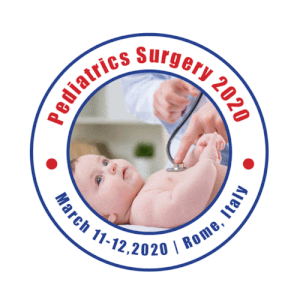
Martin Kaiser
BG Hospital Bergmannstrost, Germany
Title: Age-related strategies in Pediatric Traumatology
Biography
Biography: Martin Kaiser
Abstract
Dealing with Pediatric Traumatology we must care for many special things in the growing child.
First, physes with different potential concerning length-growth act as "good cops" while correcting misalignments specially in children below the age of 10 through remodelling. This positive corrective ability can often be used in conservative treatment. On the other hand they can cause serious trouble ("bad cops") with partial or total arrest leading to deviation of axis or length-discrepancy.
Both complications can be caused either by the lesion itself of iatrogenic by false treatment. Further on, the plasticity of bony structures creates leads to different fracture types comparted to the adult. Missing knowledge of the so-called bone centers – especially in the elbow-joint region can end up in false diagnosis. Last, but not least we treat not only different fracture types between birth and 16. Birthday and we must respect the wishes and the mentality of each child and adolescent.As many examples would clarify these topics, in this keynote speech five different locations will be discussed in detail:
Clavicular shaft fractures: Clear Indication for preferred ESIN-Osteosynthesis are rare cases of
bilateral fracture, open fracture and neurological damage. In adolescents we offer ESIN-Osteosynthesis with serious dislocation of the fracture and desire for immediate mobilization.
Proximal humeral fractures: Osteosynthesis is indicated in open fracture, neurologic lesions or complete dislocation beyond the age of 10-12 years. For adolescents we see an advantage in ESINOsteosynthesis (no K-wires) with deviation >20°and desire for immediate mobilization.
Femoral shaft Fractures: Below the age of three these fractures are treated in a cast, older children are provided with a 3-nail-modification of the classical 2-C-shaped ESIN osteosynthesis, while we implant a lateral femur nail in adolescents with open physes.
Lesions of the cruciate ligaments: In children <10 years dislocations of the eminentia intercondylaris, can often be treated conservatively, in other cases, arthroscopic or open reduction and fixation with screws or transosseal sutures is recommended. True ligamentous injuries (mostly the ACL) need a replacement with hamstring grafts.
Fractures of the distal Tibia: Irregularities of the joint-surface need reduction and then are preferably stabilized with screws; lesions of the open physes must be treated with special attempt to reduce the risk of partial or total growth arrest.
Conclusion:
Pediatric Traumatology is the small, but fine art to treat injuries of children and adolescents according to localisation, severity of injury and displacement, biological age and the individual desire and character of our little patients with most possible success.

